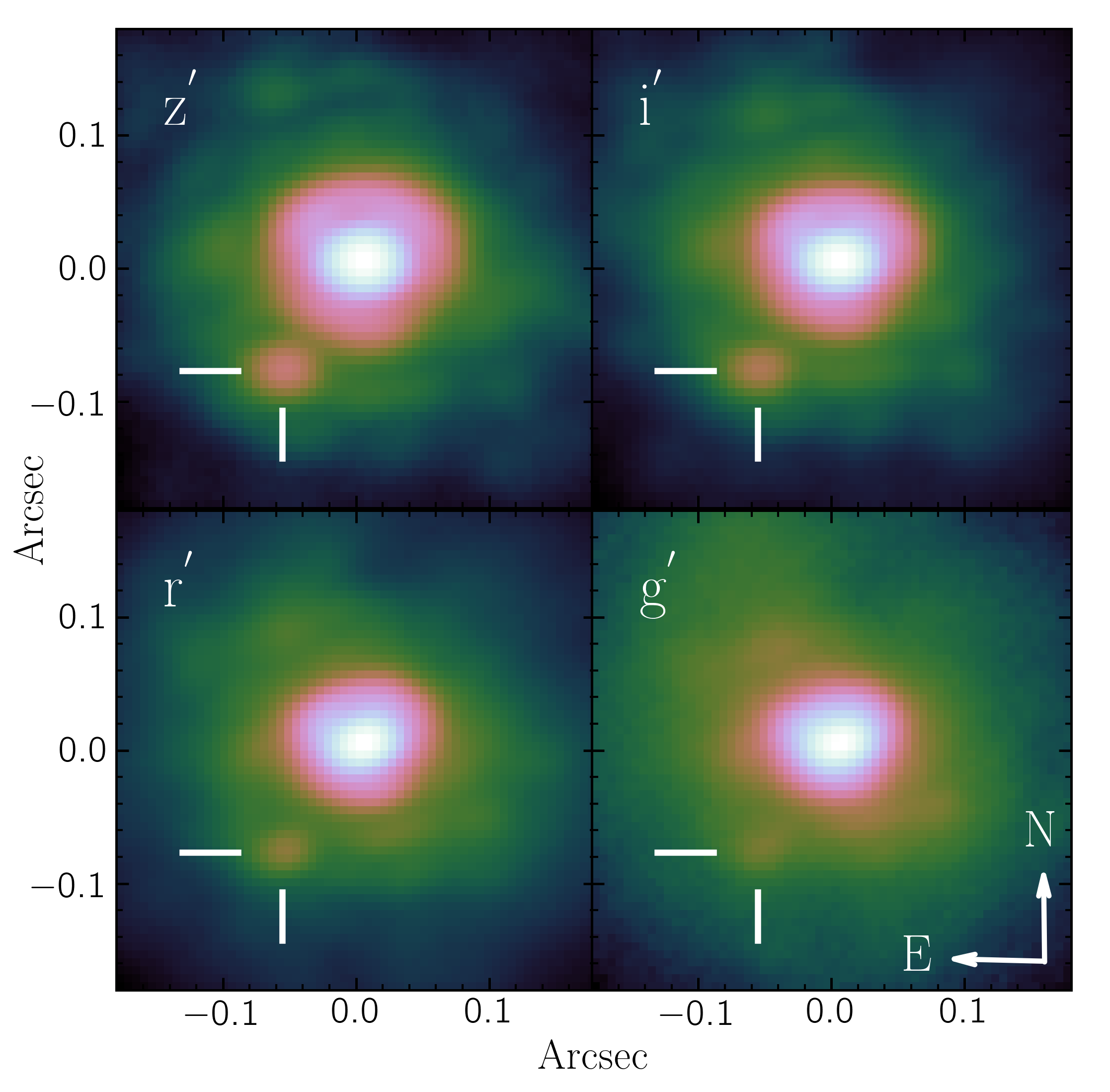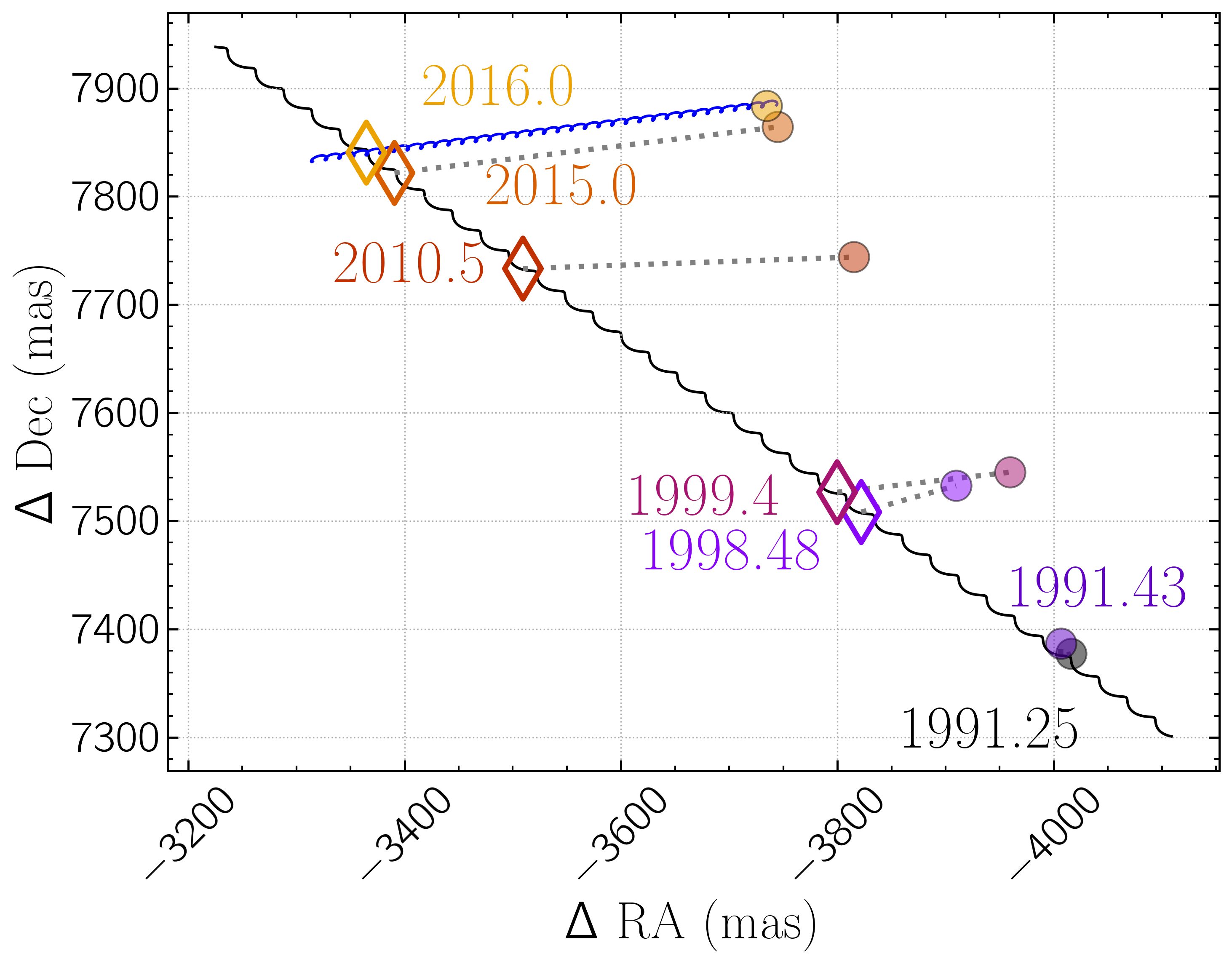Advisor: Jared Males, University of Arizona
In Pearce et al. 2022 we detected a candidate companion signal at ~2 lambda/D that we thought could be near the stellar/substellar boundary. In April 2022 we followed up with MagAO-X and determined it is a mid-M dawrf star. These systems aren't particularly rare or interesting, but it is the first astrophysics paper from MagAO-X and showed we can find reliable signals at 2 lambda/D, which is incredibly difficult, but aided by secondary companion indications like acceleration and overluminosity.
This image shows the newly discovered stellar companion, HIP 67506 C, marked with the white crosses, with the much brighter HIP 67056 A in the center.

